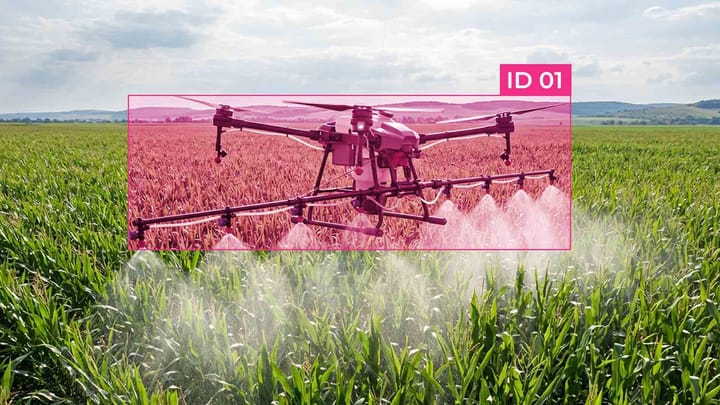Real-time AI Model Training and Annotation with 5G

Modern networks process data streams quickly, allowing engineers to refine machine learning architectures. Telecom service providers leverage these advances to create self-optimizing infrastructures that adapt to user needs.
Traditional methods took days to process complex data sets, but new approaches are improving with real-time AI adjustments. This shift supports millions of connected devices feeding data streams into evolving algorithms.
Key Takeaways
- Ultra-low latency enables intelligent systems to process instantaneous data.
- Telecom infrastructure supports millions of simultaneous data inputs.
- Continuous model improvement replaces batch development cycles.
Introduction to 5G and AI Model Training
5G and AI model training combine fast fifth-generation networks and AI algorithms. 5G provides low latency, high bandwidth, and stable connectivity. This allows for processing large amounts of data in real time. Used to train and deploy AI models that require continuous access to streaming data from sensors, cameras, or IoT devices. Artificial intelligence uses this data to detect patterns, make predictions, make decisions, and optimize processes. The 5G and AI combination enables scalable edge and cloud learning, supporting autonomous systems, smart cities, remote surgery, industrial automation, and other areas. This symbiosis reduces dependence on traditional data centers and moves computing closer to the data source using mobile edge computing technologies to distribute resources and improve security.
Improving network performance with real-time 5G AI training
Improving performance is based on AI’s ability to analyze data streams as they are transmitted. 5G networks create ideal conditions for implementing machine learning algorithms that detect anomalies, predict load, and optimize data transmission routes. This adapts the network configuration depending on the current situation, automatically balances traffic, reduces the risk of overload and uses network slicing to allocate resources. AI in 5G infrastructure allows for intelligent resource allocation between devices, reducing energy consumption and increasing connection stability during peak hours.
Complex mathematical models manage important connectivity functions. These systems process traffic streams at short intervals and detect congestion risks.
Implementations include:
- Continuous pattern recognition between distributed nodes.
- Automated rerouting protocols during peak load.
- Predictive maintenance schedules based on usage analytics.
AI-powered annotation and model development
Annotation systems use neural networks to classify information at scale. Three innovations are driving this:
- Self-correcting labeling algorithms that improve through iterative feedback.
- Context-aware classification models that adapt to changing data patterns.
- Multi-layered validation systems that ensure labeling accuracy.
- Intelligent data analytics workflows
Solid analytics platforms transform raw information into actionable intelligence. These tools uncover hidden correlations between different data sources, enabling:
- Predictive modeling of network bottlenecks.
- Automated detection of service quality anomalies.
- Allocation of resources based on usage predictions.
Integration of adaptive learning engines continuously improves data annotations and ensures that systems evolve with network requirements.
Machine Learning Innovations for Telecommunications
Machine learning innovations aim to transform network infrastructure into a flexible, intelligent, and autonomous system. Machine learning algorithms analyze large amounts of data from base stations, network sensors, and user devices. Also in real time, they detect hidden patterns and predict network behavior. This provides opportunities for automatic optimization of frequency allocation, forecasting peak loads, and preventing failures before they occur. In addition, ML improves the quality of service through adaptive algorithms that adapt to environmental conditions, signal strength, and traffic type. Deep learning and reinforcement learning help create self-managing networks that make decisions without human intervention, and reduce response times and operating costs. Such innovations are the basis for developing 5G and future 6G standards.
Overcoming Technical and Operational Challenges
Deploying advanced solutions requires complex technical landscapes.
Fragmented data is a major obstacle. Integration platforms now consolidate information from:
- Legacy databases with incompatible formats.
- IoT sensors in distributed locations.
- Third-party systems.
These solutions automatically reconcile incompatible formats and maintain quality of service across transitions.
Security through adaptive architecture
Protecting network traffic requires multi-layered protection. This is achieved through three measures:
- Continuously updated encryption protocols.
- Behavioral anomaly detection systems.
- Automated regulatory compliance audits.
Energy efficiency is a key factor for scalable implementations. Edge computing nodes combined with specialized hardware reduce energy consumption by 100% and maintain network performance benchmarks.
FAQ
How does next-generation connectivity accelerate machine learning workflows?
Next-generation connectivity provides low latency and high throughput that processes large amounts of data in real time.
What role does AI play in optimizing telecommunications operations?
AI automates network management, predicts load, and optimizes real-time resource utilization.
What security measures protect AI-enhanced networks?
AI-enhanced networks are protected by real-time anomaly detection algorithms that can automatically block suspicious activity.
How does predictive maintenance reduce downtime?
Predictive maintenance uses data analytics and AI algorithms to detect equipment wear or failure signs. This allows for scheduled repairs conveniently, minimizing unplanned downtime and reducing overall downtime.



Comments ()